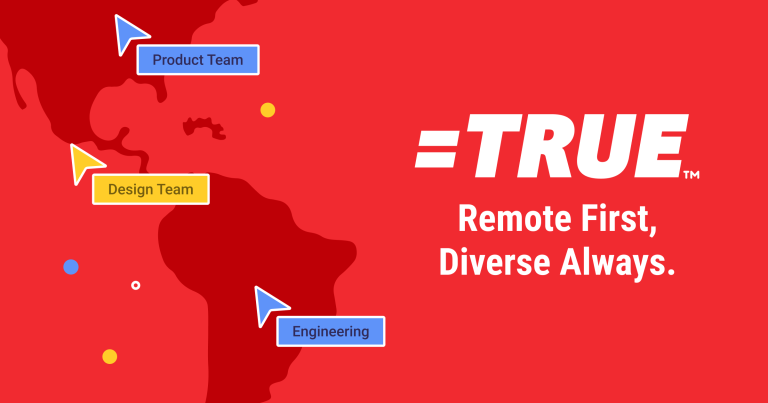Standards, Thoughtfulness, Agility, Autonomy, and being Reachable,
You can have the most talented team out there, but if they can’t work together, what value is there? There needs to be direction and teamwork that brings out the best in everyone but also allows for true collaboration. So how can you ensure that your remote team is working together in the best way possible to reach quarterly and yearly goals, as well as continue innovating?
While Agile frameworks are known to be the best way for remote teams to connect, there needs to be other elements that really keep it together. If you get your system down then there’s no need for stressful micromanaging that will only stress your teammates. At =TRUE we’ve seen how the S.T.A.A.R. method can be the best kind of structure and support that ensures that your team is supported for success.
What S.T.A.A.R. Stands For
S.T.A.A.R. stands for standards, thoughtfulness, agility, autonomy, and reachability. But let’s take a deep dive into each of these.
Standards implies the guidelines and expectations which every single team member is expected to fulfill. What is acceptable and what isn’t? This means truly being aware that while standards can be set equally across the organization, each department or role is likely to demonstrate these differently.
Thoughtfulness comes with putting in the effort to get to know each other as people aside from teammates. You can’t have effective communication and interaction without building relationships. The more respect is established between collaborators, the smoother the process of working together will be. When you know someone, you’re not afraid of asking questions or sharing your constructive opinions.
Agility means using the system in a way that works best. Don’t just do a daily standup that doesn’t contribute to your goals. Include retrospectives where everyone can learn and observe what did and didn’t work. Iterate what is doing well and what is blocking. Working asynchronously through an agile framework works best when you’ve already established goals and expectations while also knowing where everyone is coming from.
Autonomy is pretty straightforward. Everyone in a remote setting is physically on their own, yet have all the support and tools necessary to reach expectations. People can look through new ways to provide value while also being self-starters. Is there something that can make their day-to-day life easier? Does it conflict with anyone’s tasks? Does it follow the set standards? Then they can implement it. However, it needs to be integrated with the other parts of the S.T.A.A.R. method to ensure that teammates can implement changes in their own schedule and process without possibly hurting or affecting the rest of the team or fall short of the company policies. There are no rogue choices, but informed decisions based on guidelines.
Reachability becomes key in remote settings. When is someone expected to be available and when they need to ensure that they can respond and provide their teammates with what they need? Managers and team leads need to consider that freelance teammates require set times and schedules while offering or interviewing. That way there are no surprises later on. Teammates need to be online and available during “office hours” or set times when others can reach out.
What Effective Collaboration Look Like
Collaboration is one of those things that you might not know what you’re looking at. In fact, it’s possible that you might only notice that it’s going awry when things start falling apart. That’s why communication is key. Before it all goes south, teams should be able to count on each other and develop the best way to work together. What does it mean to be accountable and how can that be ensured to an extent?
Our team at =True uses this system to ensure that we are working together in the best way possible despite being entirely remote. We are able to foster relationships based on trust in order to be concise and honest when it comes to feedback and asking for help. That’s why we know how to recruit teammates for organizations that will be able to work at the top of their game, regardless of where they are.
We’ve seen how the S.T.A.A.R. method works internally for us and understands what to look for when it comes to looking for the best talent for our customers.
When you’re able to lock in remote agile collaboration you’re halfway there to succeeding in your goals and business. An organization is only as strong as its teammates working together towards creating value and maintaining a strong culture.





